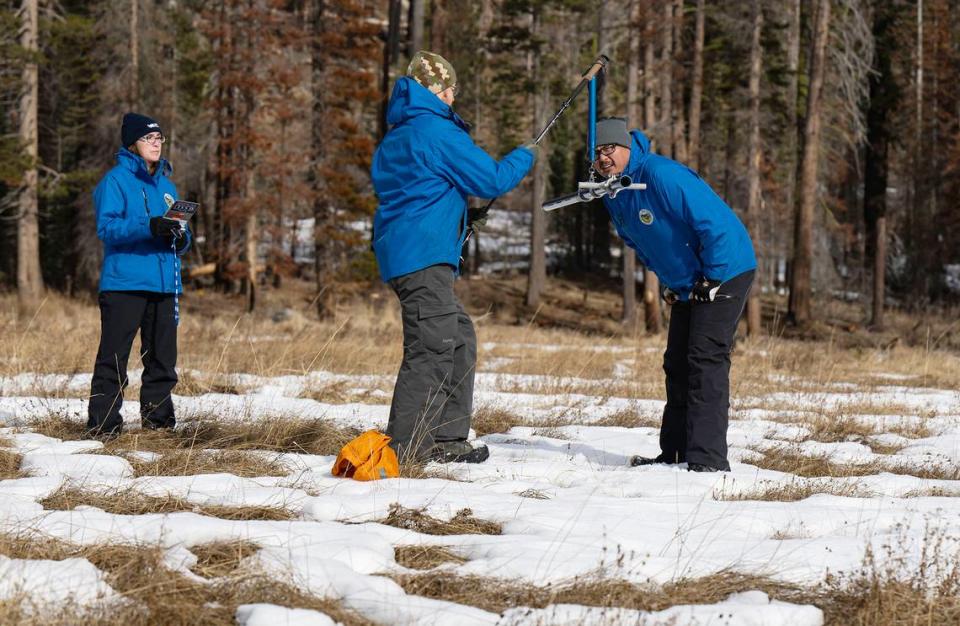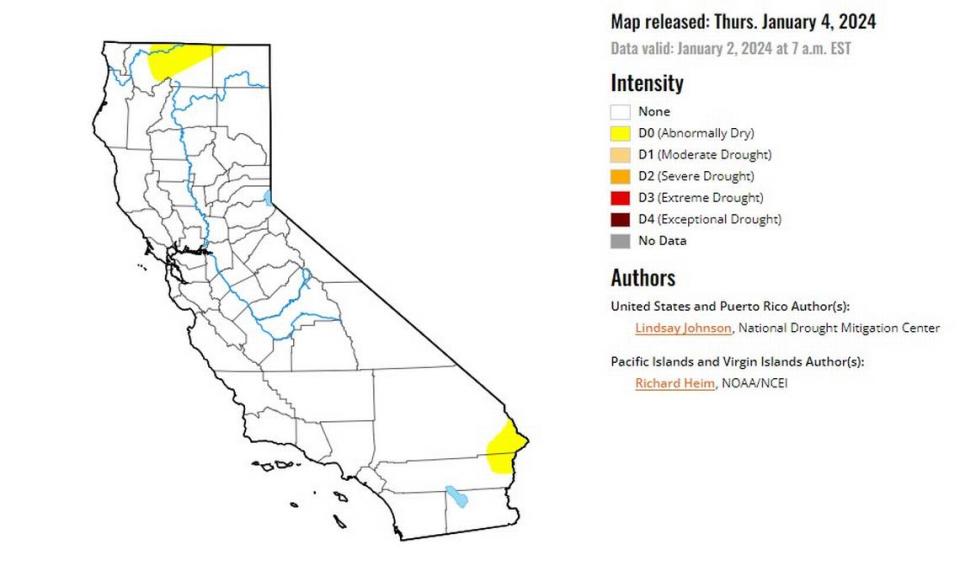Is California headed for drought after dry start to water year? What climate experts say
A dry start to the water year in California could ignite drought conditions in a matter of months, climate experts warn.
The state is undergoing its worst start to a water year in a decade, according to previous Sacramento Bee reporting, marking an extreme contrast to last year.
Without sufficient rain and snow, drought and wildfire concerns could blanket a state once gripped with years of arid conditions and water stress.
Andrew Schwartz, lead scientist with UC Berkeley Central Sierra Snow Lab, said the winter’s slow start could cause drought to reemerge by summer.
“It’s still very early,” he told The Sacramento Bee via phone, adding that it’s not time to go into ”panic mode” yet.
“It’s certainly not a certainty that (a drought) going to happen,” Schwartz added. “I don’t think we need to be throwing around the D word just yet.”

Last winter’s string of aggressive atmospheric river storms created the deepest snowpack recorded across the Sierra Nevada in at least 40 years, closing out the 2022-23 water year with above-normal precipitation.
The 2023-24 water year, which began Oct. 1, is off to an unfavorable start with drier weather patterns and a depleted snowpack. It’s a stark difference from the highly anticipated wet winter season that meteorologists forecast over the summer.
Schwartz said the state’s snowiest months — December through February — have the potential to put the water year back on track to “carry the benefits from last winter forward.”
There’s “cautious optimism” right now, he said. “If we get to four to six weeks out and we’re still looking at (a potential for drought), that’s when we become more concerned.”
The California Department of Water Resources’ first snow survey of the season found below-average conditions for the state.
According to a department news release, the manual survey, conducted on Tuesday, at Phillips Station in South Lake Tahoe recorded 7.5 inches of snow depth with a snow water equivalent of 3 inches. That’s 30% of the average snowfall for the location at that point in the season.
The statewide snowpack was 25% of the average for that date.
The next survey is scheduled for February.

What is California’s drought status?
A Thursday update from the U.S. Drought Monitor — a weekly map that illustrates drought intensities across the country — shows that California is a drought-free state that is similar to what was monitored in March 2020.
No one has lived in a drought area in California since November, a significant decrease from roughly 3,000 people in October and about 9,800 people in September.
Approximately 903,000 people remained in drought areas in August.
The update showed 0% of California has “moderate drought,” down from 0.07% on Oct. 10.
Roughly 3% of the state — parts of Siskiyou, Modoc, San Bernardino and Riverside counties — remains “abnormally dry” as of Jan. 2, according to the U.S. Drought Monitor.
From May to mid-August, between 25% and 32% of the state was under a “moderate drought.”
The state has been without “severe,” “extreme” and “exceptional” drought conditions since April.
Nearly a quarter of the state briefly spiked to a “moderate” drought status on Sept. 19 — before decreasing to less than 0.1% one week later — for the first time since February 2020.
The state has been free of “moderate” drought since Oct. 17, the U.S. Drought Monitor said.
What’s the weather forecast for California?
Another round of heavy snow was forecast this weekend for the Tahoe region, according to the National Weather Service, along with a winter storm watch for portions of the Sierra and Southern Cascades.
Schwartz said the area could receive another 1 to 2 inches of snow from the storm.
The system was forecast to be very cold, meaning it won’t produce a lot of moisture for the state’s struggling snowpack, he explained.
The UC Berkeley Central Sierra Snow Lab said that a total of 42.5 inches of snow on average has fallen in the area so far this season.
That’s 38% of the average to date, the lab wrote in an update on X, formally known as Twitter.
As of Thursday morning, another 1.2 inches of snow had fallen, the lab said.
We received 10.8" (27.5 cm) of #snow in the last 24 hours. Our season total is now 42.5" (108 cm), which is 38% of average to date. We are expecting another 0-2" today.
We are keeping an eye on this weekend's storm, which currently looks to be similar magnitude.#CAwx #CAwater pic.twitter.com/AdSfJF6csa— UC Berkeley Central Sierra Snow Lab (@UCB_CSSL) January 3, 2024
According to a Dec. 21 seasonal outlook from the National Oceanic and Atmospheric Administration, there’s a 33% to 50% chance that winter and early spring temperatures will lean above normal.
NOAA outlooks show “equal” chances of above-normal, near-normal or below-normal temperatures in the southernmost portion of the state. Meaning, there is no clear indication of how much rain the state could receive, according to the weather service.
Chances of rain are also above normal for the majority of the state, excluding the northern portions.
What do you want to know about life in Sacramento? Ask our service journalism team your top-of-mind questions in the module below or email servicejournalists@sacbee.com.

